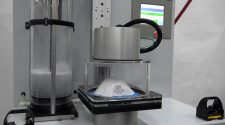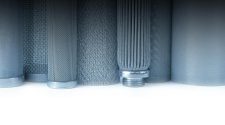While the pandemic granted air quality tremendous attention, air filter selection and installation in HVAC systems remain on the back burner. Filtration systems installed in smart cities to provide a built environment that is clean and green still need the charm and leadership required to make air quality a global priority. The time to halt conventional filtration methodologies and maintenance shortcuts is now.
The best way to grant air filtration the attention it deserves is to highlight its importance to our well-being, health, and safety of human occupants and the equipment it protects, such as heating, ventilation, and air conditioning (HVAC) systems. The premise of installing HVAC equipment is to provide human occupants with the required thermal comfort while supplying enhanced indoor air quality. But that has its energy implications as air conditioning systems and electric fans used for thermal comfort account for nearly 20% of the total electricity installed in buildings worldwide today, according to a report published by the International Energy Agency. Furthermore, the demand for HVAC systems will continue to rise due to rapid urbanization and population growth, leading to a surge in energy demand. The United Nations report projects that 2.5 billion people will reside in urban areas by 2050 through the construction of megacities representing 68% of the world population compared to 55% today [1]. According to UN-Habitat, cities currently consume 78% of the world’s energy and produce more than 60% of greenhouse gas emissions [2].
The rising demand for HVAC generally strains electricity systems in many countries and drives up emissions. Without responsible fossil fuel combustion and power usage to reduce our environmental footprint and promote energy-efficient air conditioning equipment, the global demand for power generation will continue to increase for decades to come. Furthermore, these cities also require better indoor air quality (IAQ), not just simply thermal comfort. Research has suggested that inappropriate and insufficient filtration and ventilation can lead to deteriorated IAQ in naturally and mechanically ventilated indoor spaces [3]. Other studies have shown that poor IAQ in densely occupied indoor areas can impact occupants’ productivity, cognitive performance, and physical and mental health [4-10]. Mitigating air-quality challenges requires firm policy interventions highlighting the role of advanced filtration technologies and energy-efficient HVAC systems. Recently, pandemics and environmental disasters have continued to shape our mitigation philosophies and actions to tackle air quality issues.
Filtration For the Built Environment
Air filtration is a great tool to separate and retain particles and other pollutants on or within its filter media. However, appropriate selection, installation, and employment of various filter technologies are critical in capitalizing on their capacity to perform the intended job. Air filter performance lies at the core of understanding the function of filtration needed for a given application and the form in which it is performed and delivered. However, it isn’t easy to make the role of air filtration well pronounced when filter suffer from common chronic failure as shown in Figure 1. The momentum air filtration gained during the pandemic should represent a historical milestone rather than a volatile chapter. Therefore, implementing innovative filter approaches is essential to changing the complexion of air quality and the way we perceive filter performance.
Furthermore, emphasizing better air quality and a healthy built environment requires allocating funds for aerosol filtration research and atmospheric aerosol characterization. Combining such research with continuous outdoor and indoor aerosol monitoring will prove invaluable in assessing air filter performance when challenged with various outdoor concentrations of particulates and gaseous contaminants. This becomes of critical importance as an adult typically inhales 17,000 liters of air daily, depending on the breathing patterns of each individual. Ultimately, this renders a low airborne contaminant concentration of many inhaled pollutants extremely hazardous over relatively short exposure durations. Therefore, inappropriate filter selection exposes the indoor environment and its human occupants’ respiratory systems to many pollutant types. Furthermore, poor filter performance impedes the ability of HVAC equipment to deliver appropriate heating and/or cooling needed for occupants’ thermal comfort.
Appropriate filter selection requires a fundamental understanding of the physical and chemical characteristics of the pollutants of interest. Ultimately, delivering the proper quality and quantity of clean air to the built environment requires energy-efficient air filtration solutions. However, while the nature of filter selection for each application may appear standard, the filtration dynamics will probably change. This is particularly true as market dynamics may shift as customer preferences evolve, filtration technologies advance, and eventually, new products are released.
Filter Media
![Figure 2: Scanning electron microscope image highlighting the inhomogeneity of fibrous filter media. [11]](https://www.filtnews.com/wp-content/uploads/IFN_032023_education_FIG-1.jpg)
An integral element in the anatomy of an air filter is its media. Filter media represents the building blocks of an air filter. Their properties control the filtration process, how the filter performs, and whether the particles will deposit on the depth or surface of the filter through dendrite or cake formation, or pass completely through the filter. However, the inhomogeneity of filter media continues to pose a tremendous challenge to filter performance prediction, as shown in Figure 2. Filter media are expected to be permeable, efficient, and have the structural integrity required to sustain the air flow without undergoing a substantial deformation that alters performance characteristics.
Air Filter Performance Prediction
![Figure 3: Examples of dendrites and dust cake formations on filter media. [11]](https://www.filtnews.com/wp-content/uploads/IFN_032025_education_FIG-3.jpg)
The essence of selecting appropriate air filters for HVAC applications lies in understanding the challenges in a given geographic location, climate, and operational conditions. These factors can have their fingerprints on the selection and stages required to render outdoor air safe to supply indoors.
One of the main challenges in air filtration is the performance deviation of air filters from that predicted by laboratory results. In addition, the variation in particle characteristics in terms of density, size distribution, and concentration can alter the filtration dynamics of particle loading and eventually lead to premature clogging. For example, given the air filter design and media selection, excessive particle
concentration could lead to surface deposition of particles on a depth medium leading to substantial permeability reduction. As shown in Figure 3, particles can also bridge to form tree-like dendrites to form an eventual cake layer.
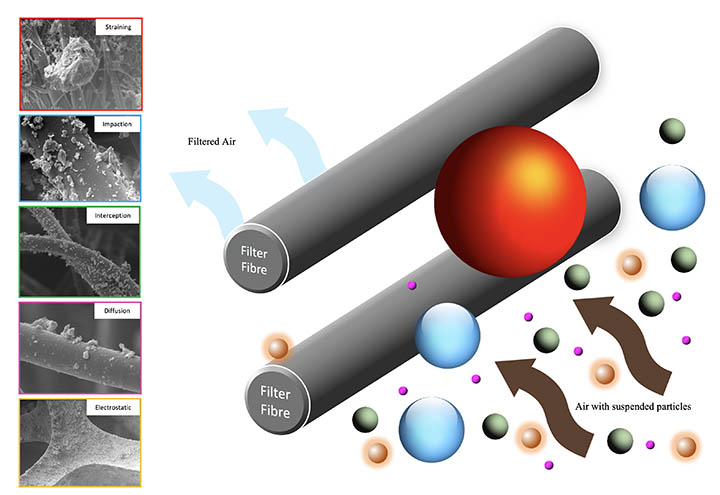
Therefore, one of the primary issues in air filtration is highlighting prefiltration’s role rather than relying single-handedly on one filtration stage to do the job. The importance of filtration stages is paramount since the dominant mechanism/s is/are influenced by particle size and their distribution, as shown in Figure 4. Filter loading by particle capture is characterized by dominant mechanisms and is illustrated in Figure 5 based on the dominant mechanisms. The filter efficiency and mechanism of capture depend upon many interrelated factors, such as aerosol size, face velocity, density, and fiber packing in the media. In addition, adjacent fibers, dendrite formation, and fiber charge influence the loading of ‘real’ filters.
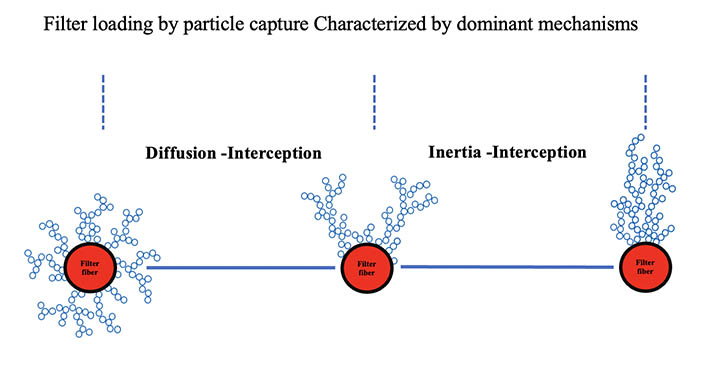
Filter Loading and Clogging
Air filters installed in HVAC applications are depth filters used predominantly to capture aerosols utilizing fibrous filters. Depth filters go through stationary, nonstationary, transition, and surface-deposition stages. In depth filtration, particle-cake formation signifies that filters need replacement or maintenance. On the other hand, early dust-cake formation is required in surface filtration to attain higher efficiencies. The variation in the filter medium pore structure as particles continue to deposit in its interstitial spaces causes permeability reduction and alters the flow dynamics leading to a pronounced rise in the filter’s pressure drop.
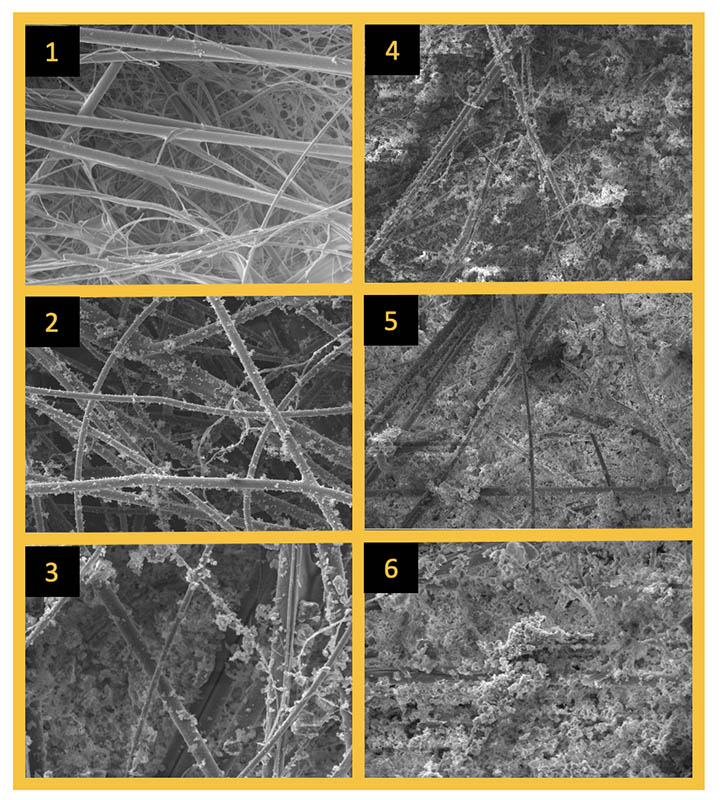
As a result, increasing the filter’s resistance compromises the flow rate delivered to the indoor spaces, and the human occupants may begin to feel thermally uncomfortable. In addition, excessive human occupancy in the built environment will increase the moisture level indoors, which would challenge the installed HVAC equipment to achieve the thermal comfort required while delivering sufficient clean air indoors. Excessive moisture also influences filter loading and performance and fosters the potential for odor development and microorganism growth.
![Figure 7: Comparison between particle depth (Right) and surface (Left) deposition. [11].](https://www.filtnews.com/wp-content/uploads/IFN_032023_education_Fig-7.jpg)
The particle loading of a typical fibrous filter structure is shown in Figure 6 as it progresses through its lifetime from stationary to nonstationary, to transition, and eventually to clogging. On the other hand, Figure 7 shows premature dust cake formation on a typical fibrous filter used in HVAC equipment compared to a stationary phase of filtration of a similar filter. Ideally, extending the stationary stage of the filter’s lifetime is critical as the depth deposition of particles occurs at the negligible rise in pressure drop. In addition, premature clogging of air filters steers away filter performance from energy-efficiency considerations.
Particle Size and Particle Loading
In the global battle against COVID-19, when nothing seemed to work as far as protecting humanity from infections, some filtration solutions finally did. Nevertheless, unfortunately, the tremendous losses in human lives and the impact on the global economy have echoed the rhyme of enhanced air quality. Regardless, air filters can perform and, in some instances, outperform if the ideal operational conditions are facilitated, such as leak-free installation and subjecting them to a rated flow rate.
![Figure 8: V-bank filter with four-openings and eight pleated panel of fibrous media. [11]](https://www.filtnews.com/wp-content/uploads/IFN_032023_education_FIG-8.jpg)
Understanding that the outdoor environment filter operates from within and where the HVAC system draws air indoors is essential to avoiding performance deviation. Premature clogging leading to shortened filter lifetime has financial implications, whether by more frequently replacing filters than planned or inducing damage to the HVAC equipment. Furthermore, when particles start to seep indoors, they expose human occupants to adverse health risks and accelerate the facility that aging HVAC systems aim to protect.
![Figure 9: Scanning electron microscopic comparison showing SAE Fine and Coarse dusts. [11]](https://www.filtnews.com/wp-content/uploads/IFN_032023_education_FIG-9-650x1024.jpg)
![Figure 10: Pressure drop response of V-bank filter cartridge after loading them with SAE Fine and Coarse dusts. [11]](https://www.filtnews.com/wp-content/uploads/IFN_032023_education_FIG-10.jpg)
The overall efficiency of a filter is based on the combination of the dominant collection mechanisms. Therefore, particle size is a fundamental parameter in aerosol properties and highly influences filter performance. To illustrate such effect, two similar E10 V-bank filter cartridges (Figure 8) were loaded with SAE Fine and Coarse synthetic dust in laboratory settings, respectively. Figure 9 illustrates the visual difference in particle size between the two dust types. The comparison in the pressure drop response due to their loading is shown in Figure 10, indicating that SAE Fine dust particles were more penetrating than SAE Coarse particles. Fine dust particles tend to occupy more interstitial spaces inside the filter medium, leading to substantial alternation in the pore structure and hence, the pressure drop of the filter increases.
Air Quality for Smart Cities
Smart cities’ goals are attained faster when the interest among sectors is common, targets are clear, and funds and resources to execute the integration plans are available. Moreover, implementing air quality solutions available today is an added value to the built environment and the well-being of human occupants. A recent case study has highlighted the benefits of continuous rather than periodic air quality monitoring in densely populated call centers [12]. Experimental work has highlighted the deterioration of air quality when staff arrive at work and then return to acceptable settings when they leave. Although staff interactions and breathing patterns significantly affected the indoor air quality, the data collected helped the facility management make appropriate maintenance decisions relevant to upgrading air filters, increasing ventilation rates, and installing chemical filters to treat the volatile organic compounds (VOCs) concentration existing in the center during office hours. As illustrated in Figure 11, the PM1 and PM2.5 concentrations were reduced after the filter upgrades to a minimum and maximum of zero and one µg/m3, respectively. Figure 12 illustrates the air quality monitoring comparison of a call center between working days and weekends for VOCs and carbon dioxide (CO2).
![Figure 11: Air quality monitoring of a call center pre-, during and post-office hours. 1 and PM2.5). [12]](https://www.filtnews.com/wp-content/uploads/IFN_032023_education_FIG-11.jpg)
![Figure 12: Air quality monitoring comparison of a call center between working days and weekends (VOCs & CO2). [12]](https://www.filtnews.com/wp-content/uploads/IFN_032023_education_FIG-12.jpg)
Globally, China, Singapore, Korea, Japan, and Finland are leading toward more sophisticated use of the Internet of Things (IOTs) to control air quality. Integrating air quality monitoring systems to measure, track, and mitigate pollutant concentrations, maintain thermal comfort, and operate equipment through energy- efficiency strategies will prove invaluable.
The Emerging Eureka Moment
It is challenging to fight a eureka moment when air quality becomes a pillar of the indoor environment and the global economy. Overlooking the critical role of inhaling better air quality and allowing human exposure to pollution is a misdemeanor. Could it be that having pandemics is just like sun and moon eclipses, and encountering the next pandemic is simply a matter of time. The order of the day is not to have any more pandemics as opposed to “let’s be ready for the next one.” This would be facilitated by understanding the importance of available filtration technologies and realizing the potential of their employment in indoor environments.
Recalling that people are one of the three pillars of sustainability alongside planet and profit, embracing “human-centric” air quality models will save many lives and outweigh the financial impacts. Neglecting to control the risks of pollution and exposure and failing to utilize second-to-none HVAC systems hinder the well-being of humans. We must decide whether to embrace sustainable air quality business models and pay the fees or the fines for not doing so. The challenges ahead are grand; the rising tide of air pollution is evident; measures are still evolving, but the next pandemic may be approaching.
References:
- United Nations, Department of Economic and Social Affairs, Population Division (2019). World Urbanization Prospects: The 2018 Revision (ST/ESA/SER.A/420). New York: United Nations.
- C40 Cities Climate Leadership Group, Technical report: The case for a green and just recovery, April 2021.
- EN 16798-3:2017 Energy performance of buildings – Part 3: Ventilation for non-residential buildings Performance requirements for ventilation and room conditioning systems.
- H.-S. Kwon, M.H. Ryu, C. Carlsten, Ultrafine particles: unique physicochemical properties relevant to health and disease, Exp. Mol. Med. 52 (2020) 318–328, https://doi.org/10.1038/s12276-020-0405-1.
- M.U.Ali,S.Lin,B.Yousaf,Q.Abbas,M.A.M.Munir,A.Rashid,C.Zheng,X.Kuang, M.H. Wong, Pollution characteristics, mechanism of toxicity and health effects of the ultrafine particles in the indoor environment: current status and future perspectives, Crit. Rev. Environ. Sci. Technol. 52 (2022) 436–473.
- Liu, Su & Yang, Yuetao & Cai, Ling. (2023). Impact of air quality on enterprise productivity: Evidence from Chinese listed companies. Frontiers in Environmental Science. 10. 1095393. 10.3389/fenvs.2022.1095393.
- Ai, H., Wang, M., Zhang, Y. J., and Zhu, T. T. (2022). How does air pollution affect urban innovation capability? Evidence from 281 cities in China. Struct. Change Econ. Dyn. 61, 166–178. doi:10.1016/j.strueco.2022.02.012
- Aznar-Marquez, J., and Ruiz-Tamarit, J. R. (2016). Environmental pollution, sustained growth, and sufficient conditions for sustainable development. Econ. Model. 54, 439–449. doi:10.1016/j.econmod.2016.01.017
- Balakrishnan, U., and Tsaneva, M. (2021). Air pollution and academic performance: Evidence from India. World Dev. 146, 105553. doi:10.1016/j.worlddev.2021.105553
- Balakrishnan, U., and Tsaneva, M. (2022). Impact of air pollution on mental health in India. J. Dev. Stud. 2022, 1–15. doi:10.1080/00220388.2022.2120804
- Al-Attar, I.S. (2011): The effect of pleating density and dust type on performance of absolute fibrous filters. Loughborough University. Thesis. https://hdl.handle.net/2134/8814
- Said M., Al-Attar I., “Sustainable air filtration perspectives for healthier built environments”, Indoor Air Quality, Ventilation, Energy, Conference. May 2023, Tokyo, Japan.


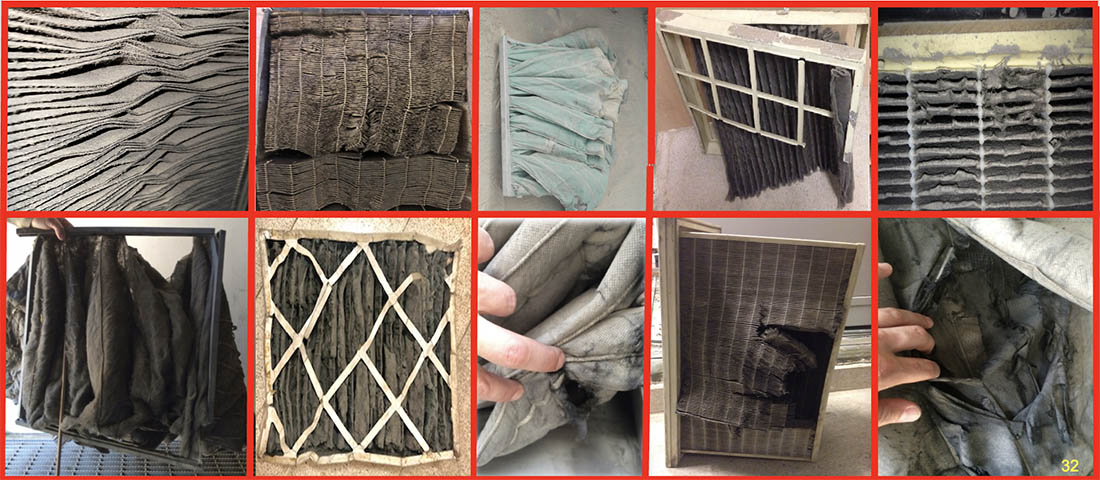


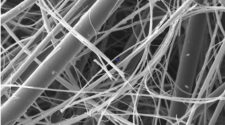
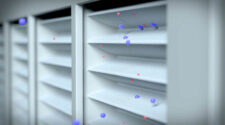

![Figure 1: Heat Exchanger Proventics GMBH.[22]](https://www.filtnews.com/wp-content/uploads/IFN_2_2024_crimpedmicrofiberyarns_Fig.-1-Heat-exchanger-225x125.jpg)
